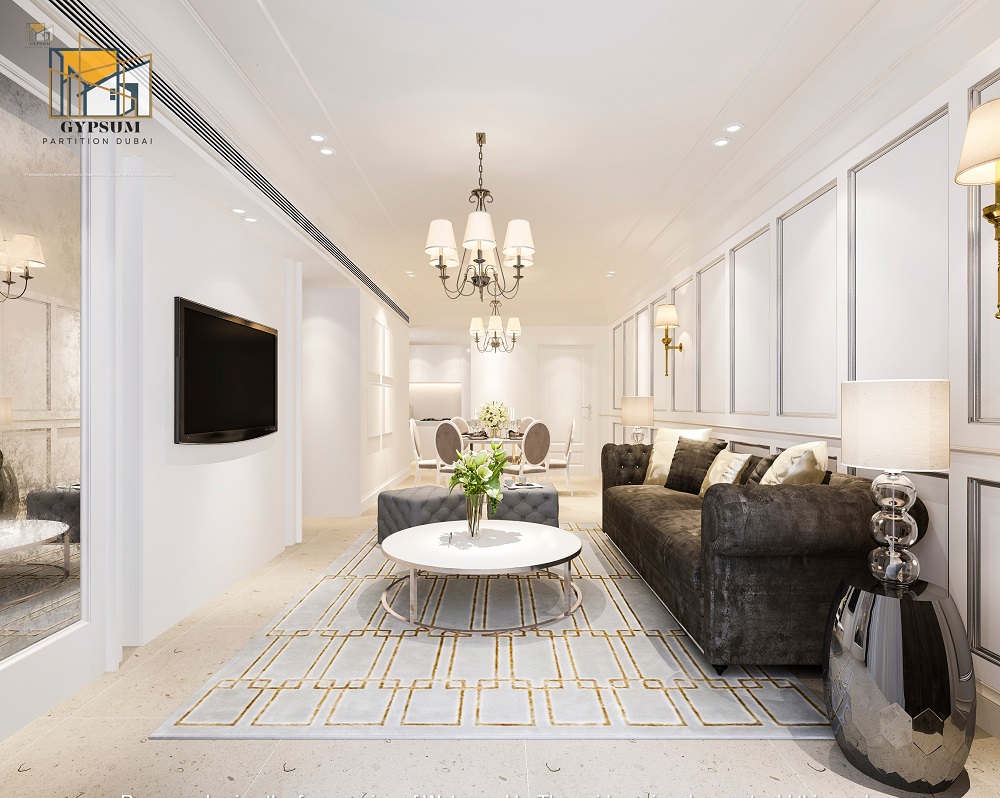
Benefits and Versatility of Gypsum Wall Partitions
Gypsum wall partitions have become a versatile and well-liked option for making functional and aesthetically pleasing spaces in the world of interior design and construction. Gypsum board, a product renowned for its adaptability and wealth of benefits, is used to build these partitions, which are frequently referred to as plasterboard or drywall partitions. Gypsum wall partitions have become a crucial component of contemporary construction, from private residences to business structures. We will examine the many facets of gypsum wall partitions in this article, including their composition, advantages, method of installation, and use in various contexts.
Benefits of Gypsum Wall Partitions
1. Fire Resistance: Gypsum board naturally resists fire, which makes it a great material for partition walls. Gypsum wall partitions can stop the spread of flames during a fire, giving occupants more time to leave the structure.
2. Sound Insulation: Gypsum wall partitions are ideal for establishing quiet, private spaces in both residential and commercial settings because they are effective at reducing sound transmission between rooms.
3. Versatility: Gypsum partitions can be used to arrange rooms in a variety of ways, adjusting to various architectural and interior design needs. To fit the design aesthetic, they are easily cut, shaped, and finished.
4. Speed of Installation: Gypsum wall partitions can be installed more quickly than traditional masonry walls, which can shorten construction periods and lower costs.
5. Cost-Effective: Gypsum board is a cost-effective option that provides excellent value for the money. It can be installed without specialized labor and is easily accessible.
Installation Process
1. Frame Construction: Building a sturdy frame is the first step in installing a gypsum wall partition. Usually, a wooden or metal framework is built to support the gypsum board.
2. Cutting and Fitting: Gypsum boards are then fitted onto the frame using screws or nails after being cut to the required size and shape. To ensure a smooth and even finish, the boards must be installed precisely.Taping and Jointing: After the boards are put in place, jointing compound or drywall mud is used to cover screw holes and joints. In order to create a seamless, continuous surface, the seams are next taped.
3. Sanding and Finishing: To achieve a seamless finish, the surface is sanded after the jointing compound dries. Then it can be painted over or covered with other wall decor.
Applications of Gypsum Wall Partitions
1. Residential Homes: Gypsum wall partitions are frequently used in residences to build internal walls, divide spaces, and offer a smooth surface for painting or wallpapering.
2. Office Spaces: Gypsum partitions are used in commercial settings to designate individual offices, conference rooms, and open-plan work areas. They provide the adaptability to change the layout to suit shifting business requirements.
3. Retail Environments: Changing rooms, storage spaces, and display walls are all created in retail spaces using gypsum partitions. Renovations and updates can be completed quickly thanks to their simple installation and finishing.
4. Healthcare Facilities: Gypsum wall partitions are frequently used in hospitals and clinics to create private patient rooms, exam rooms, and administrative offices. Gypsum’s fire-resistance is essential in healthcare settings.
1. What is a gypsum wall partition?
A gypsum wall partition is a non-load-bearing interior wall system made primarily from gypsum panels or boards. It is used to divide interior spaces in buildings and provides a smooth and durable surface for finishing.
2. How are gypsum wall partitions constructed?
Gypsum wall partitions are typically constructed using gypsum panels attached to a metal or wood framing system. The panels are secured to the framework, and joints are sealed and finished to create a seamless surface.
3. Are gypsum wall partitions fire-resistant?
Yes, gypsum wall partitions are known for their fire-resistant properties. Gypsum board has a high resistance to fire, making it an ideal choice for partition walls in buildings where fire safety is a concern.
4. Can gypsum wall partitions be used in wet areas like bathrooms or kitchens?
Gypsum wall partitions are not recommended for use in wet areas because gypsum is susceptible to water damage. For wet areas, it’s better to use moisture-resistant materials like green board or cement board.
5. Are gypsum wall partitions suitable for commercial buildings as well as homes?
Yes, gypsum wall partitions are commonly used in both residential and commercial buildings. They are versatile and can be adapted for various settings.
Conclusion
Gypsum wall partitions have become a crucial component of contemporary construction thanks to their numerous advantages, such as cost effectiveness, versatility, and fire resistance. They are a top option for designing practical and aesthetically pleasing interior spaces due to their simplicity of installation and adaptability to various settings. Gypsum wall partitions are still a dependable and environmentally friendly choice for builders and designers seeking flexibility and efficiency in their projects as construction technology develops. Gypsum wall partitions have demonstrated their value as a flexible and essential component of interior design and construction, whether in homes, offices, retail spaces, or healthcare facilities.


